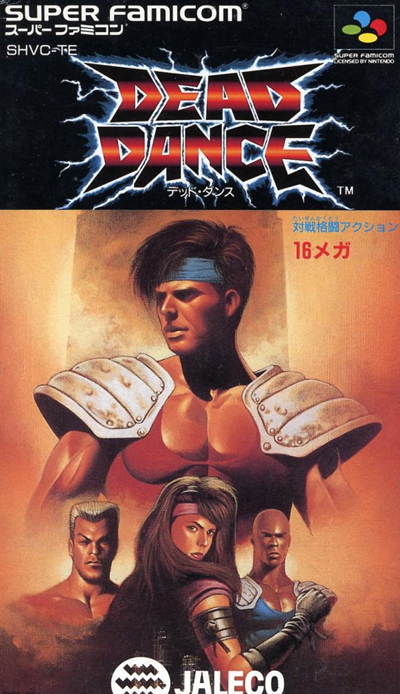Jaleco is one of those unfortunate game companies that never quite made it. Despite the promise of Bases Loaded and the Jajamaru series, no Jaleco title found truly enduring success, and the developer limped through a depressing decade before its game division was cut loose and sold to Game Yarou in 2009. Jaleco’s contributions to the game industry are minimal, but they left behind a fascinating legacy of box art. From Astyanax to Rival Turf! to the modern wonder of Pulse Racer, Jaleco always delivered covers that were awkward in so many different ways.
The 1990s saw Jaleco's box art at the top of its game. When the company's Japanese studios put together a fighting game called Dead Dance in 1993, one might have expected Jaleco's North American branch to run with the same title. But that wouldn’t do. Jaleco had renamed Rushing Beat to Rival Turf!, and no slightly morbid alliteration would suffice for this new fighting game. They needed something fierce, something that challenged players with a single, searing question.
Well, are you? Are you Tuff E Nuff to take on this hideous refugee from a Rob Liefeld comic and his totally extreme strand of suspended drool? Are you ready to master the moves to master him, no matter how disturbing that phrase may sound? And are you ready for the disappointment of a fighting game that doesn't quite live up to that elf-punk’s deliriously aggressive pitch?
In all likelihood, you were Tuff E Nuff for this particular game, as it’s a routine fighter several steps behind the genre leaders of 1993. Far from the lineups of Street Fighter II Turbo or even Mortal Kombat, Tuff E Nuff (or Hey, Punk! Are You Tuff E Nuff?) presents only four playable characters at the game’s start, requiring players to unlock seven equally bland additional fighters with a code. And two of those four original fighters are Ken/Ryu color-swaps.

|
The Japanese and European versions of the game were not, in fact, Tuff E Nuff for such a cover. They used the original title of Dead Dance and milder box art, reportedly acquired from Computer and Video Games. Perhaps Jaleco’s U.S. branch was right to ignore this. While the artwork is of higher quality, the cover for Dead Dance is static, with three heroes scowling, drool-free, at the viewer while the larger Syoh just sort of stares off. The only tension comes from Syoh threatening to snap his taut, post-apocalyptic battle bikini.
Tuff E Nuff’s cover would prove the more memorable of the two. Jaleco’s 1997 The Game Paradise is a shooter set in a video arcade, and it’s stocked with references to the various arcade titles that kept Jaleco afloat over the years. Right before the first level's boss, you'll see the cover for Tuff E Nuff fill the background. Jaleco knew their legacy when they saw it.
Next: America hates you, Yuko.